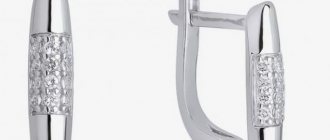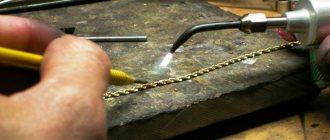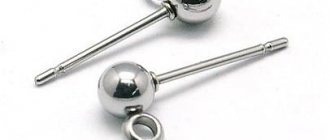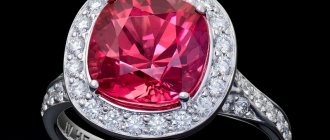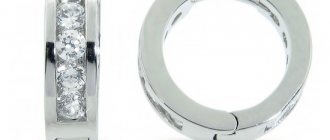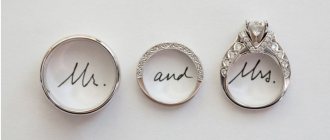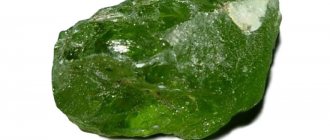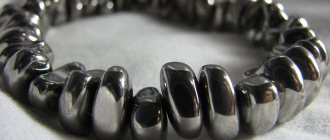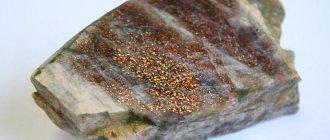The advantages of an English lock on earrings are difficult to overestimate; today it is one of the most reliable fastenings that does not injure the earlobe and almost never requires repair. In addition, you can create any type of jewelry using an English lock clasp (the exception being stud earrings).
But despite the high reliability, many people face a problem. how to unfasten and tighten the English lock on earrings, how to clean the fasteners and adjust them. About everything in the material of our author Elena.
How does an English lock work on earrings?
This is the most common type used in the jewelry industry and is so popular due to its versatility and durability. Clasps are installed on both the lightest and heaviest jewelry, and there is no alternative to them in this segment. To describe the advantages and disadvantages, it should be noted that the clasp consists of three parts: the hook, the flag and the pendant.
According to the production method, English locks can be divided into two categories - cast and stamped. Cast pendants are the most common type, but there may be hidden internal defects that will reduce the service life of such a fastener.
Types of nose earrings
To understand how to put an earring on your nose, you need to decide on its type. There are 3 of them in total:
Read also: Black and white manicure 2021
- Carnations. They are the ones who perform punctures in professional salons. In this case, choose the option made from a medical alloy. They look very neat on the side of the nose, but the latch can be seen from some angles inside the nostril.
- Hook, snail or spiral. There is no additional latch in such products. They stay in the nose due to their curved shape. The advantage of such jewelry is that the inner part can be turned so that it is not visible at all.
- Rings. They are not often used for the wing of the nose. They are much more common in the septum (middle septum of the nose), ear, eyebrow or lip. The products consist of a small ring and a clip. Often the fastening element is a thread, which allows you to securely fasten the earring to the desired area of the body.
Important! Before putting a new earring into your nose after a piercing, wait until the wound has completely healed. On average, you can change jewelry after 2-3 weeks.
Types of wires - what to look for
Increasingly, jewelry factories are installing pins made by cutting tinsel. Previously, they were only used in lightweight budget earrings to reduce weight and production costs. Today, such pendants can be found on high-end jewelry. They are very durable and have proven to be very practical and reliable for everyday use.
When choosing earrings, pay special attention to the thickness and width of the metal around the hook hole. This is the weakest point in the entire castle and the one that breaks first.
Italian castle (omega)
The clasp resembles a clip in appearance. A straight pin is inserted into the puncture; it does not snap into place at the back, but is pressed by a movable bow with a wide loop-clip. Such a lock is reliable, but at the same time quite difficult to manufacture, therefore it is used in products made of precious metals and premium jewelry.
Earrings with Italian lock
Most often, Italian locks have medium and large earrings, the decorative part of which covers the pierced area. This design allows you to hide possible earlobe defects. However, there are also relatively small decorations and pendants on an elegant open base. Thanks to the balance of the product and the large support area (the loop-clip distributes the weight of the jewelry over the entire earlobe), even massive earrings with an Italian lock are very comfortable to wear, and the thin, smooth pin does not injure the puncture.
Unlike the English one, the similar Italian lock can be adjusted in depth. It is difficult to unfasten it unnoticed or accidentally. Keep in mind: it is necessary to monitor the serviceability of the hinge connection of the movable bow and the base of the jewelry, and if it becomes loose, take it to a jewelry workshop for tightening. All our earrings with Italian lock are here
English castle hook
Crochet is also a very important part of the whole clasp. It can be divided into two types: round wire and rectangular profile.
Round ones are more comfortable for the ear, rectangular ones are more reliable, they do not bend so easily. When purchasing, pay special attention to the thickness of the cut area. Sometimes the cutting edge is too deep and can break quickly.
Problems with the length also often arise: if the earring is too long, it sags; if too short, it squeezes and causes discomfort. The standard distance between body and edge is 7 mm, but deviations of 1 to 2 mm are possible.
French castle
Locks of this type were extremely common in Soviet times. They are usually found on earrings with one accent stone or other static decorative element. It is an elastic loop that is threaded into the ear and secured with a triangular movable loop or a fixed hook, often behind the base of the jewelry.
Earrings with French lock
It is believed that earrings with a French lock are suitable for children due to their simplicity, reliability and non-traumatic nature.
Despite its apparent simplicity, it is difficult to accidentally unfasten the clasp, but even if this happens (for example, the fastening of the loop has become loose and therefore slips), the jewelry still remains in the ear.
What to pay attention to
Earrings with such a lock leave the puncture area open. This may be important if the hole in the earlobe is quite large.
Is it possible to remake an English lock on earrings?
Please note that greater length is not an obstacle to purchasing jewelry. In any jewelry workshop it is very easy and quick to make a bar in the right place and charge a small amount of money for it. Changing the size upward is a more troublesome and expensive task. Do not give in to the temptation of the seller and it is better not to make such a purchase.
With an English clasp, the flag is the least of your worries; the main requirement is that it does not interfere with the pendant being opened completely and freely.
Silicone plugs for hooks
Good day everyone.
I ask for advice from jewelers and craftsmen who work with costume jewelry. Such a problem. I have silicone plugs on my gold stud earrings (I lost my gold ones). Today I wanted to take off my earrings, but the plugs wouldn’t budge (. I took them off two months ago, with difficulty, really. And now I don’t know how to remove them. Is there any softener for these plugs? Have you ever encountered such a problem? I’ll be glad to hear your advice because by the second day I’m walking around with swollen lobes))) PS I’m in a hurry to share) I took off the plugs. The earlobes, from my attempts to remove the plugs by force, became so swollen that I had to take urgent measures. I was going to see a surgeon, but I decided to take the last chance because my husband is now on a business trip and there was no one to help me (my sons were afraid)))) I did this: I heated the plug with a hairdryer, that’s how much patience I had and nail clippers I slowly began to bite off pieces of silicone. She bit off half of it, and the second half came off on its own, this is on one earring, and on the other completely in pieces - she bit off and took off, she bit off and took off. The conclusion is that the silicone warms up from the heat and, in principle, the plugs can be removed, but it is still better not to use them for everyday wear and not expose yourself to unpleasant consequences. Thanks everyone and good luck!
maybe if there is someone next to you, try to carefully cut them (cut them off) with scissors, a knife, wire cutters, a blade, or a nail file. Maybe they’ll come off like that (come off)?
. most likely this happened due to frequent contact with water (in the bathroom) chlorinated water dries ((
ps:: I'm already worried about you! I'm sitting wondering how you can take them off. I thought maybe I could drop some vegetable oil on them and rub them lightly so that the oil gets between the plug and the gold. I don't know, but it's worth a try! It definitely won't get any worse
I tried it with oil, but it doesn’t come off!
Try applying Vaseline oil.
Thanks, I'll try, but the oil slips and it's very difficult to grab both the earring and the plug.
Good night! Try twisting them clockwise and counterclockwise, holding the earring with one hand and twisting with the other...
)))) She twisted it so hard that her earlobes became swollen. I actually think that I’ll have to bite the stem of the clove ((((
Well, of course, you can bite the stem of the carnation, but this is a last resort... it would be a shame to ruin the gold earrings. ((
Try to “bite” the plug itself first
Yes, I’ll probably try to bite the plug) And what’s strange. They didn’t seem to be very hard, but now they’re just like glass!
like glass - it’s all from chlorinated water (we washed in them, after all) and temperature changes, of course
Well, I don’t know.. But it just seems to me that silicone plugs have the same properties as most silicone rubber, namely, some properties change at different temperatures. Take it like a hot bath. Theoretically, when exposed to hot water or steam, the silicone should soften. Take it off there.
It's really worth trying a bath as Oksana advises. What if it helps! I think this is a good idea!
Thank you) I work with dolls and “communicate” a little with silicone) and I thought the same thing, that maybe the water will soften it, but it doesn’t! The bath didn’t help (I’ll try to wet cotton pads and hold them on my earlobes, because the silicone seems to soften from the heat.
Not if you just hold the cotton pads on your earlobes - this obviously will not heat the silicone. Lie in the hot tub until your earlobes are under water. And try to remove it right there, otherwise, while you get out of the bathroom, the silicone will “shrink” again, having cooled down.
I have long noticed that silicone plugs behave differently at different temperatures. I was convinced of this when I lost one carnation with a beautiful stone (it was wildly hot). The pebble on the nail was quite large. In the heat, silicone becomes soft and pliable, more friable or something - that’s how the stone outweighed it. In the cold, on the contrary, silicone becomes harder.
Yes, yes, now they are like glass!
Yes, everything is sad. I looked it up on the Internet, but you found yourself in a situation! Read this - this is the truth about sealant, but also silicone https://www.otdellka.org.ru/index.php/germetik. In general, the “pipe” is a matter. What they are offering, of course, will not suit you - if you damage your earlobe, you will at least get a chemical burn. Of these products, however, there is one that is more or less harmless (compared to others) - kerosene - it softens the silicone (maybe it will soften it in an hour). But first, try the bathroom. If it doesn’t help, then kerosene (not gasoline, you’ll burn your skin).
What are shvenzi?
The earring pendants themselves are a metal element that forms a loop through which the jewelry is inserted into the ear. At the bottom of the product there is a special hole into which tags are inserted. In addition, earring pendants often have various prongs into which various gemstones, pearls and other decorative elements are inserted. These prongs may have special prongs for gemstones or, in the absence of prongs, the jewelry is often secured with a thin epoxy resin.
In costume jewelry, pins without locks are most often used, but such accessories are not used for jewelry, since the clasp is not reliable enough and there is a risk of losing the precious piece.
What to do if it doesn’t come off?
- ask another person for help (let him try to open or examine why the decoration stopped working normally);
- drip oil onto the English clasp;
- treat the ear.
The last option is suitable for those whose earlobe is damaged or has not had time to recover after the puncture. Since healing is not yet complete, pus and ichor are released from the hole. Their accumulation on the fastener is fraught with difficulties in unfastening. To resolve the issue, it will be enough to thoroughly treat the ear and earring with a disinfecting solution . Everything unnecessary will be removed from the lock, and it will begin to function normally.
What does an English lock look like on earrings?
The English castle (Bo hairpin) is one of the most popular designs of this type. It is characterized by a very high degree of reliability and is used in expensive jewelry. A special feature of the English lock is the flat shape of the shank. Due to their width, the earrings will not fit if the ear opening is too narrow.
The French lock has an eyelet at the top in the form of a curved eyelet. It runs down to the base of the blade, where it hooks onto a rim attached to the pivot point.
Italian locking pins are similar to English ones, but in these pins the fastening is adjustable according to the width of the petal.
Studs are simple pins with a base (usually flat). The lock in this type of earrings is a plug that is attached to a pin. It secures the pin with a spacer or is screwed. In the latter case, the pin has a thread.
Hook pendants do not have a closure and are always curved. For safety, some craftsmen put plugs on the hooks (like studs).
Secure long earrings to the temples
Many women love to wear long earrings. Most often, such jewelry is attached to bow-shaped clasps. But such fastening is not always reliable. Long jewelry often gets caught in the hair and jumps out of the ears. You may not notice how you have lost a piece of jewelry.
To prevent this from happening, purchase special silicone plugs from the store and place them on the ends of the arms. This will prevent your jewelry from slipping out of your ears. In addition, silicone will act as a counterweight and will prevent long earrings from excessively pulling on the earlobe.
If you don’t have ready-made plugs, you can make them yourself. Cut out small pieces from a stationery eraser and use them to secure long earrings.
If you don't have an eraser, you can use clasps from cheap stud earrings as plugs.
Shapes of clasps for earrings
The wrong type of fastener can cause a lot of inconvenience when wearing. This is why there are so many options: over the centuries since the invention of the very concept of jewelry, people have tirelessly experimented in search of an option that would be comfortable, reliable and beautiful at the same time.
It consists of a pin and a hinge on which a small spring is located. To close the clasp, insert the pin (it has a hole and a small notch) and push it until it clicks.
English castle on earrings
This design has only one advantage: greater reliability. To unfasten such a fastener, you need to slightly pull the hinge up, otherwise it simply cannot be unfastened. To release the clasp, the earring must be gently pulled up, otherwise it will be impossible to remove it. This is why English clasps are used for large designer earrings that would be a shame to lose.
There are two drawbacks: not everyone can easily fasten and unfasten the clasp - this requires some skill and experience. And it is not suitable for everyone, since there is no way to adjust the distance to which the zipper closes. If a girl has a relatively thin earlobe, there will be room for it, and the decorative part will stick out. If the lobe is thick, the pendant will put pressure on it, causing pain.
French clasp for stud earrings
The French version combines the pin and stud into one - the clasp is a small piece of metal that you insert into your ear and then carefully insert into a loop attached to the base.
The advantage is lightness. The clasp does not weigh down the earring, and at the same time it is very easy to put on and take off - just press it lightly. That’s why earrings with it are often bought for children: they don’t fall out, are easy to put on and don’t pull on the ear.
There is also one drawback - fragility. The fragile and thin loop breaks easily under pressure. Therefore, earrings with such a clasp are not recommended to be worn during active activities. It is also recommended to take them off while sleeping.
Italian lock for earrings
It is very similar in design to English, with one exception: there are no serifs on the typeface. Therefore, the pin can be easily inserted and locked in any suitable position.
The advantage of the design is its versatility: earrings with such a clasp are ideal for girls with a non-standard earlobe width, as they are adjustable in position.
There are two drawbacks: you should not sleep in these earrings because the pendant may slip off under pressure. In addition, they are not very reliable - it is better not to wear them during outdoor activities, they can fall off.
How to remove a silicone clasp from an earring
Now the trend is stud jewelry - small earrings with silicone plugs. They look elegant, fasten easily and quickly, and do not put pressure on the earlobes. If the clasp is lost, it can be replaced without much expense. However, studs should not be worn for too long. The silicone hardens and the plug stops opening. What to do in such cases?
If the clasp is still soft, you just need to rinse it well with peroxide directly on the ear. Dirt has probably accumulated where the lock is secured. If the silicone has hardened and the fastener does not have metal elements inside, you can use a hair dryer to soften it. It is necessary to heat the lobe carefully to avoid burns. When the clasp becomes warm, you should try to separate the silicone from the earring. It usually comes off easily. After the ear is freed from the jewelry, it must be treated with a disinfectant.
If there is a need to remove a silicone fastener with a metal insert, a hair dryer cannot be used. You need to moisten a cotton pad with any oil and thoroughly wipe the jewelry on both sides. The silicone will become wet and the plug can be pulled out of your ear.
It is important to disinfect your hands, earlobes and earrings before all these procedures! Do not try to remove silicone fasteners with sharp objects - this is dangerous. If none of the methods described above helped, it is better to contact a piercer or a hospital to quickly remove the clasp without pain or consequences.
Earrings with English lock
Platforms for attaching jewelry can be solid or with holes. The holes are needed to decorate the product with glass beads or pearls. They are often made in two levels to hide the unattractive rear end.
The lower part of the pendant is often made solid, and the holes are located above or on a special retractable disk. In single-level versions, the back is covered with some decorative element, for example, leather or acrylic.
There are also round pendants that do not have a closure or holes for decoration. Various beads, bobbleheads or something similar are strung on such a base. In such pendants, an additional decorative element is the shape of the central part; it can be a heart, a drop, a flower and much more.
Inserts
Inserts are another form of decorating jewelry. Their choice is determined by the style of the earrings, fashion trends and tendencies. For example, this season, products with animal prints, neon inserts and cowboy motifs are at the peak of popularity.
Cast is the part of the earring that is responsible for fixing the insert. There are no specific classifications here. The only sign by which these fragments can differ is size. It is determined by the insertion scale.
How to remove earrings with an English lock
Women usually have the most problems with an English lock - it is fixed so firmly that it is not immediately clear how to remove it. Usually proceed with caution:
- Hold the pin between your fingers to prevent it from moving.
- Gently grasp the pin with your other hand and pull it up.
- When it moves slightly, pull it towards you.
- It is important to catch the moment when the pendant slips out of the groove and not pull it up until that moment.
If simple pulling does not help, it is recommended to slightly rock it from side to side.
The most important thing is not to damage your ear in the process, don’t get upset and don’t rush - and learning how to open an English lock on earrings won’t be that difficult.
How to remove an earring from ear cartilage
In recent years, boys and girls have begun to pierce not only the earlobe, but also the cartilage of the ear in different places. This makes it possible to wear several pieces of jewelry at once and create a stylish, interesting look. The products are easily threaded into the cartilage and do not cause any discomfort to the owner. But it also happens that the earring gets stuck in it and cannot be pulled out. What should I do?
You can use any of the tips already described above. However, when pain occurs when trying to open an earring inserted into the cartilage, you should not do anything on your own. This means that the jewelry has grown into the tissue of the ear. Only a specialist can carefully remove it.
French or English lock on earrings - which is better?
There are two types of fasteners that can officially be considered the most reliable:
English castle. The pendant is securely fixed in its groove; it does not move or become loose. It is almost impossible to lose such an earring unless it breaks. It requires some effort to destroy it. The English lock is so secure that novice users often have difficulty unfastening it.
Pusset screws. It is much easier to put on than the English version, but the principle is the same: the pendant is screwed onto a pin and firmly fixed in it. To remove the earring, you need to unscrew it, and this can only be done by hand. Such a clasp is difficult to break, and it is almost impossible to lose the earring.
All other earring clasps are not so reliable, although they can also be very convenient. Therefore, an English lock on earrings is preferable to a French one, which is fragile and easy to open.
What to use instead of a clasp on stud earrings
There are several options that allow you to temporarily replace a lost part. For example, I consider one of the simplest to be using a piece of a regular office eraser. I tried this myself, and it’s a completely workable option, especially in the case of earrings that have a very thin and, therefore, sharp stem. You just need to carefully cut out the future fastener in the eraser. But this, of course, is a temporary solution that allows you not to worry about the possible loss of the earring. But there is an elastic band in almost any home or office.
You can also cut a circle out of a plastic bottle and pierce it directly with the earring. You can also use foil for this purpose, folded several times for rigidity. If you, like me, have a creative nature, you will definitely have a glue gun in the house and, most importantly, rods for it. It’s from the latter that you need to cut off a ring that will hold the earring more securely than the previous options I proposed.
Well, the most obvious advice: if you still have stud earrings in your arsenal, remove the clasp from them for a while. This is suitable if the fastening system of the donor earring is similar to the one whose clasp was lost. After all, there are also nails with a thread on the rod onto which the fastening element is screwed.
It is advisable to purchase the missing part as quickly as possible. Moreover, this element can often be bought in most jewelry stores. I strongly recommend purchasing several fasteners at once so as not to find yourself in such an unpleasant situation again.
@aliexpress.ru
English castle - how to choose the best
It will be easier to determine this if we understand well what shwenza is. As we already know, this is an important element in jewelry making. Before purchasing, unfasten and close the locks and evaluate their strength. Compare the two studs to each other. Look carefully at the color of the metal and its uniformity. Do not forget that the surface must be flat and smooth.
How to replace a fastener at home
Popular solutions to the problem:
- Use an eraser to erase pencils. A quick solution to a pressing problem, but not durable. Simply cut off a piece of eraser and put it on the earring instead of the lost clasp. Enough fixation for the evening. To reuse, you will have to cut off a new piece of the eraser;
- Instead of an eraser, use glue for a glue gun. You will need to cut a small ring from the rod and use it instead of a clasp. The decorations hold up better in this case than in the previous one;
- take the clasp from other earrings. This is not a bad solution. Only if you want to put on a second pair, the lock will have to be rearranged again. Inconvenient, but suitable as a temporary solution.
Knowing how to replace the clasp on stud earrings, understanding that this is a temporary measure, try to buy the missing parts in a specialized store in the near future. They are sold in retail outlets offering jewelry products. You can also purchase components for earrings in online stores. It is better to buy with a reserve right away.
Hook
A long hook is inserted into the puncture, which is not fixed in anything. The configuration is simple, so earrings with it are lighter and cheaper. The earring stays in the ear thanks to its balance and its own weight.
Hook earrings
Since the hook does not have a lock, it can be accidentally removed by getting caught in clothing. Ordinary silicone stud stoppers will help you avoid this trouble. All our earrings with hook lock are here
